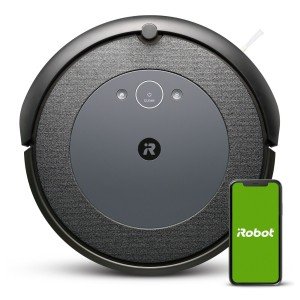Revolutionizing Home Maintenance: The Rise of Cleaning Robots
In an age where technology continues to affect daily life, cleaning robots have emerged as a considerable development in the field of domestic cleaning. automatic cleaning robot have redefined how households manage cleaning jobs, supplying convenience and performance. With their capability to browse areas, avoid barriers, and run on pre-set schedules, cleaning robots are becoming necessary tools for homeowners wanting to enhance both their time and their living environment.
The Evolution of Cleaning Robots
Cleaning robots have actually gone through an incredible transformation given that their inception. What began as basic machines has progressed into advanced gadgets equipped with innovative features. Below is a table highlighting some crucial milestones in the development of cleaning robots.
| Year | Turning point | Description |
|---|---|---|
| 1996 | First Commercial Robot | The first robotic vacuum, Electrolux's Trilobite, was introduced. |
| 2002 | Roomba Launch | iRobot launched the Roomba, making robotic vacuum cleaners popular. |
| 2004 | Mapping Technology Introduced | iRobot introduced smarter navigation capabilities, enabling much better cleaning courses. |
| 2012 | Smart device Integration | The introduction of mobile app control permitted users to control robots from another location. |
| 2020 | Advanced Sensors & & AI | Robots started making use of AI for improved mapping and things recognition. |
Types of Cleaning Robots
As technology has advanced, numerous types of cleaning robots have actually appeared, each designed to deal with various cleaning requirements. Some of these include:
Robotic Vacuums
- Developed to autonomously vacuum floorings, they often feature sensors to navigate around rooms and go back to their charging stations.
Robotic Mops
- These robots are geared up with mopping functionality, making use of water or cleaning options to scrub floors.
Window Cleaning Robots
- Particularly engineered for window cleaning, these gadgets can climb vertical surfaces utilizing suction or magnetic systems.
Swimming Pool Cleaning Robots
- Created for in-ground swimming pools, these robots collect particles and even scrub the walls of the swimming pool effectively.
Multi-tasking Robots
- Some contemporary cleaning robots integrate vacuuming and mopping capabilities, using versatile cleaning solutions.
How Cleaning Robots Work
The core functionality of cleaning robots is focused around their ability to navigate homes autonomously while executing cleaning tasks. Here's a breakdown of the fundamental elements that allow them to perform effectively:
- Sensors: Most cleaning robots are equipped with sensors that help them spot barriers, slopes, and edges, preventing falls and collisions.
- Navigation Technology: Many robots utilize a combination of gyroscopes, accelerometers, and in some cases cameras or LIDAR for navigation. redirected here allows them to map their environment and clean efficiently without missing areas.
- Source of power: Most cleaning robots run on rechargeable batteries, with numerous capable of returning to their charging docks when their power runs low.
- Cleaning Mechanisms: Whether through suction for vacuuming or rotating brushes for mopping, cleaning robots include various mechanisms tailored for effective dirt removal.
Advantages of Cleaning Robots
The incorporation of cleaning robots in families presents several advantages:
- Time-Saving: Cleaning robots can operate on their own, allowing homeowners to participate in other activities.
- Consistent Cleaning: With scheduled cleaning times, these robots make sure consistent upkeep of the home.
- Hard-to-Reach Areas: Cleaning robots can access narrow areas and corners that conventional cleaning tools may fight with.
- Reduced Allergens: Regular cleaning assists minimize dust and irritants, adding to a much healthier living environment.
Limitations of Cleaning Robots
In spite of their lots of benefits, cleaning robots also present certain limitations that users need to consider:
- High Initial Cost: While the price of cleaning robots has decreased gradually, some innovative designs can be relatively costly.
- Inconsistent Performance: Not all robots perform equally; some might have problem with specific surfaces or dirt types, resulting in unsatisfactory outcomes.
- Limited Capacity: Many robotic vacuums have smaller dustbin capacities, requiring more frequent emptying than conventional vacuum cleaners.
Frequently Asked Questions about Cleaning Robots
Q: Are cleaning robots worth the investment?A: Cleaning robots can be
a rewarding financial investment for those looking for time-saving options. They can considerably relieve the cleaning concern, specifically for busy households. Q: Can cleaning robots be programmed?A: Yes, lots of cleaning robots include programmable schedules and modes, permitting users to set specific cleaning times and locations. Q: How do I keep my cleaning robot?A: Regular upkeep includes cleaning the brushes, clearing the dustbin, and sometimes looking for software application updates. Q: Are cleaning robots effective on all surfaces?A: Most robotic vacuums work on hard floorings and low-pile carpets. However, effectiveness might
vary on thick carpets or certain types of rugs. Q: Do cleaning robots work well under furniture?A: Cleaning robots are designed to fit under most furniture; however, the efficiency can depend on the height of the furnishings.
Cleaning robots represent a breakthrough in the world of
domestic tasks, providing a blend of innovation, convenience, and effectiveness. While they are not a complete replacement for standard
cleaning techniques, they substantially enhance housekeeping capabilities. As improvements continue, future versions of these devices are expected to become even more intelligent, effective, and easy to use, additional incorporating into the smart homes of tomorrow. The modern-day house owner thus deals with an amazing future where cleaning robots might take much of the drudgery out of home upkeep, enabling for a cleaner home with very little effort.

